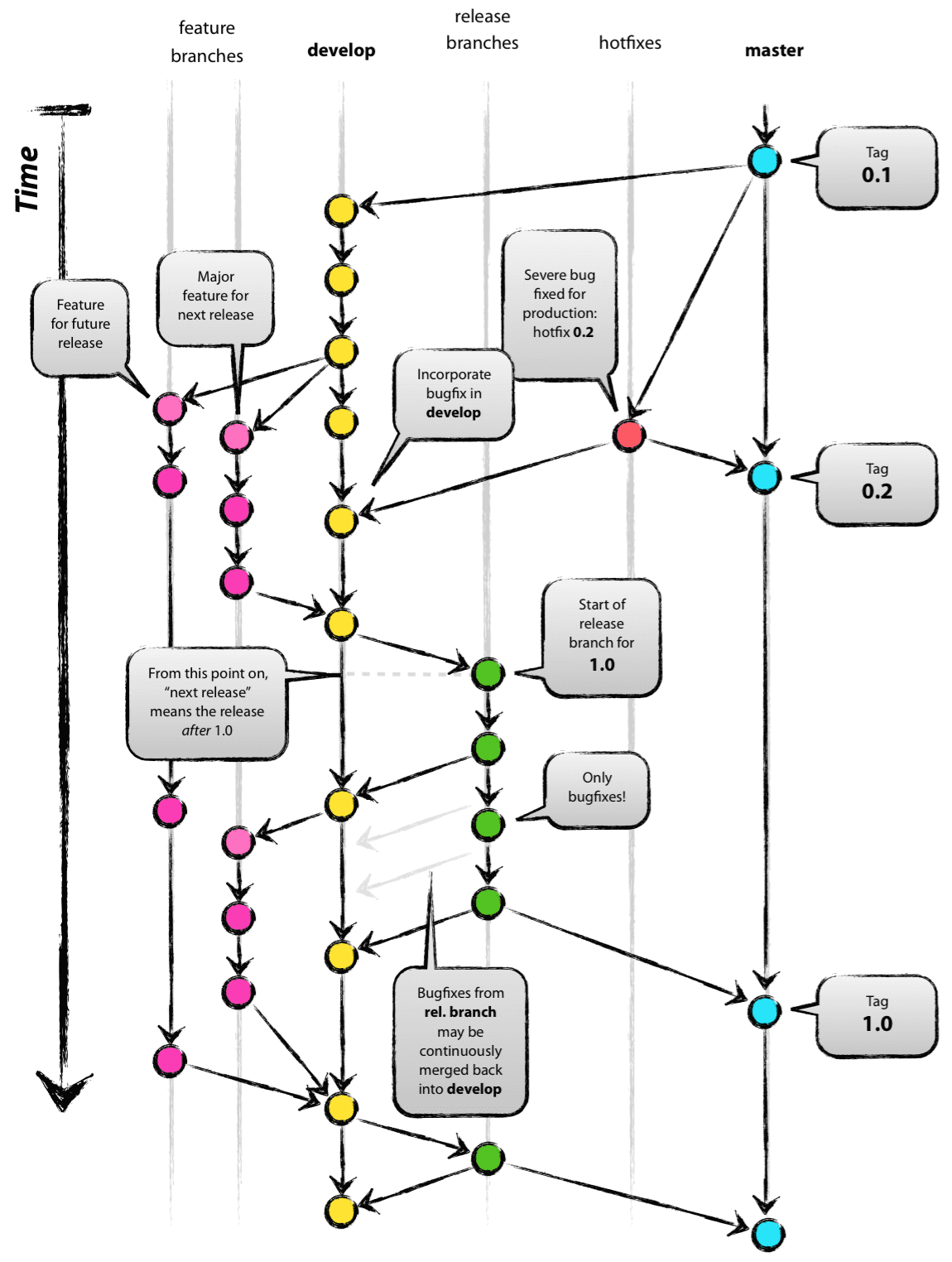-
Notifications
You must be signed in to change notification settings - Fork 6
Git Research
Git is a famous version control organization which is founded by Linus Torvalds in 2005. It provides coordination on files that enables several people to work on it. It is commonly used in software but it's not restricted to only code files. Git is free software distributed under the terms of the GNU General Public License version 2.
Main advantages of Git can be summed as from the official web site of Git.
The Git feature that really makes it stand apart from nearly every other SCM out there is its branching model.
Git allows and encourages you to have multiple local branches that can be entirely independent of each other.
The creation, merging, and deletion of those lines of development takes seconds.
This means that you can do things like:
Frictionless Context Switching: Create a branch to try out an idea, commit a few times, switch back to where you
branched from, apply a patch, switch back to where you are experimenting, and merge it in.
Role-Based Codelines: Have a branch that always contains only what goes to production, another that you merge work
into for testing, and several smaller ones for day to day work.
Feature Based Workflow: Create new branches for each new feature you're working on so you can seamlessly switch
back and forth between them, then delete each branch when that feature gets merged into your main line.
Disposable Experimentation: Create a branch to experiment in, realize it's not going to work, and just delete it -
abandoning the work—with nobody else ever seeing it (even if you've pushed other branches in the meantime).
Let's first start with seeing the version of Git.
git --version
It can be configured globally like this
git config --global user.email [email protected]
An empty repository can be initialized with
git init
Files can be add by giving it's path after add command. Let's first add all the files with dot.
git add .
Status of repository can be retrieved with
git status
Commits can be done easily with commit command(Don't forget to add files before commit)
git commit
Go to particular commit with
git checkout commit_id
Now we've worked on locally. Let's push our repository to remote.
git remote add origin https://github.com/some_username/cmpe352_project
Push to the remote. Arguments -u origin master are needed for the first time.
git push -u origin master
One of the great feature of Git is branch. We will use branches a lot in our CMPE 352 project. To create one
git branch some_cool_branch_name_here
Checkout on any branch with
git checkout branch_name
If we messed up we will delete the branch like that
git -d branch_name
As we've decided in the Meeting 1 we will follow Git Flow convention in our project. A great blog post can be found in this link..
Main structure of GitFlow is this:
Git is not limited to that of course. We will look from this official documentation when we need additional help.
- Cultural Activities Project
- Communication Plan
- Requirements Analysis
- Project Plan
- User Stories
- Mockups
- User Scenarios
- Class Diagram
- Sequence Diagrams
- Use Cases
- Test Cases
- Android Software Design
- Twitter API Application
- First Term Milestone Report
- Milestone#1 Report
- Milestone#2 Report
- Meeting #1: 8.02.2018
- Meeting #2: 13.02.2018
- Customer Meeting #1: 15.02.2018
- Meeting #3: 19.02.2018
- Meeting #4: 26.02.2018
- Meeting #5: 05.03.2018
- Meeting #6: 12.03.2018
- Meeting #7: 19.03.2018
- Meeting #8: 26.03.2018
- Meeting #9: 02.04.2018
- Meeting #10: 09.04.2018
- Meeting #11: 06.05.2018
- Meeting #12: 19.05.2018
- Meeting #13: 01.10.2018
- Meeting #14: 06.10.2018 - Project Design
- Meeting #15: 08.10.2018 - Android Related
- Meeting #17: 24.10.2018 - Backend Team
- Meeting #18: 29.10.2018 - Before Milestone(Skype)
- Meeting #19: 30.10.2018 - After Milestone(Skype)
- Meeting #20: 06.11.2018 - Backend Team
- Meeting #21: 09.11.2018 - Android Team
- Meeting #23: 19.11.2018 -Android Team(Skype)
- Meeting #24: 27.11.2018 - Backend Team
- Meeting #25: 01.12.2018 - Frontend Team
- Meeting #26: 05.12.2018 - Frontend Team
- Meeting #27: 10.12.2018 - Frontend Team
- Meeting #28: 31.12.2018 - Frontend Team
- Abdurrahman Dilmaç
- Anıl Seyrek
- Atıf Emre Yüksel
- Erkam Ağralı
- Fatih Maytalman
- Mert Aközcan
- Mustafa Alparslan
- Ömer Kırbıyık (Project Manager/Communicator)
- Zeynep Işık
